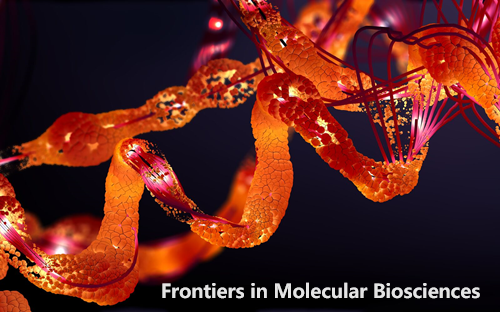通过体内噬菌体展示筛选从骆驼中分离出脑单域抗体/纳米抗体的分子动力学模拟
IF 3.9
3区 生物学
Q2 BIOCHEMISTRY & MOLECULAR BIOLOGY
引用次数: 0
摘要
导言在过去十年中,治疗性抗体或被动免疫疗法在治疗炎症和癌症等各种疾病方面的应用大幅增加。然而,这些蛋白质在进入大脑时面临挑战,通常需要专门的递送方法,如单域抗体(sdAbs)。传统抗体难以有效穿过血脑屏障(BBB),从而影响了其疗效。对 RMT 受体具有亲和力的 sdAbs 和多肽配体通常被用来增强生物治疗化合物通过 BBB 的运输。本研究使用了来自13个骆驼样本的sdAbs噬菌体展示文库,通过体内平移鉴定与人BBB内皮细胞(ECs)特异性结合并被其内化的sdABs。结果与讨论一种被定义为FB24的sdAb被分离、测序、翻译成开放阅读框(ORF)并进行了三维(3D)建模。利用 HADDOCK 网络服务器和 GROMACS 分别进行了分子对接和分子动力学模拟,以评估 FB24 与 EC 受体之间的相互作用。对接结果显示,FB24与潜在EC受体的结合活性为-1.7至-2.7范围的z得分,并保持稳定的结构。FB24-RAGE(高级糖化终产物受体,又称高级糖化终产物受体[AGER])的对接复合物显示出 18 个氢键和 213 个非键接触。我们选择该复合物通过 GROMACS 的分子动力学模拟进行进一步分析。该复合物显示出稳定的状态,其均方根偏差(RMSD)为 0.218 nm。结果表明,FB24 可以作为一种合适的载体,通过非侵入性途径将治疗和诊断药物穿过 BBB 转运到大脑。本文章由计算机程序翻译,如有差异,请以英文原文为准。
Molecular dynamics simulation of the brain-isolated single-domain antibody/nanobody from camels through in vivo phage display screening
IntroductionDuring the last decade, there has been a significant rise in the use of therapeutic antibodies or passive immunotherapy for treating various conditions like inflammation and cancer. However, these proteins face challenges reaching the brain and often require specialized delivery methods such as single-domain antibodies (sdAbs). Traditional antibodies struggle to efficiently cross the blood-brain barrier (BBB), hindering their effectiveness. Receptor-mediated transcytosis (RMT) offers a promising pathway for transporting large molecules essential for brain function and treatment across the BBB.MethodsSdAbs and peptide ligands with an affinity for RMT receptors are commonly employed to enhance the transport of biotherapeutics compounds across the BBB. This research used a sdAbs phage-displayed library from 13 camelus dromedarius samples to identify sdABs that specifically bind to and are internalized by human BBB endothelial cells (ECs) through in vivo panning.Results and discussionOne sdAb, defined as FB24, was isolated, sequenced, translated into an open reading frame (ORF), and subjected to three-dimensional (3D) modeling. Molecular docking and molecular dynamics simulations were carried out by the HADDOCK web server and GROMACS, respectively, to evaluate the interaction between FB24 and EC receptors in silico . The docking results revealed that FB24 exhibited binding activity against potential EC receptors with −1.7 to −2.7 ranged z score and maintained a stable structure. The docked complex of FB24-RAGE (receptor for advanced glycation end products, also known as advanced glycation end product receptor [AGER]) showed 18 hydrogen bonds and 213 non-bonded contacts. It was chosen for further analysis by molecular dynamics simulations by GROMACS. This complex showed a stable condition, and its root mean square deviation (RMSD) was 0.218 nm. The results suggest that FB24 could serve as a suitable carrier vector for transporting therapeutic and diagnostic agents across the BBB to the brain through a non-invasive route.
求助全文
通过发布文献求助,成功后即可免费获取论文全文。
去求助
来源期刊

Frontiers in Molecular Biosciences
Biochemistry, Genetics and Molecular Biology-Biochemistry
CiteScore
7.20
自引率
4.00%
发文量
1361
审稿时长
14 weeks
期刊介绍:
Much of contemporary investigation in the life sciences is devoted to the molecular-scale understanding of the relationships between genes and the environment — in particular, dynamic alterations in the levels, modifications, and interactions of cellular effectors, including proteins. Frontiers in Molecular Biosciences offers an international publication platform for basic as well as applied research; we encourage contributions spanning both established and emerging areas of biology. To this end, the journal draws from empirical disciplines such as structural biology, enzymology, biochemistry, and biophysics, capitalizing as well on the technological advancements that have enabled metabolomics and proteomics measurements in massively parallel throughput, and the development of robust and innovative computational biology strategies. We also recognize influences from medicine and technology, welcoming studies in molecular genetics, molecular diagnostics and therapeutics, and nanotechnology.
Our ultimate objective is the comprehensive illustration of the molecular mechanisms regulating proteins, nucleic acids, carbohydrates, lipids, and small metabolites in organisms across all branches of life.
In addition to interesting new findings, techniques, and applications, Frontiers in Molecular Biosciences will consider new testable hypotheses to inspire different perspectives and stimulate scientific dialogue. The integration of in silico, in vitro, and in vivo approaches will benefit endeavors across all domains of the life sciences.
 求助内容:
求助内容: 应助结果提醒方式:
应助结果提醒方式:


